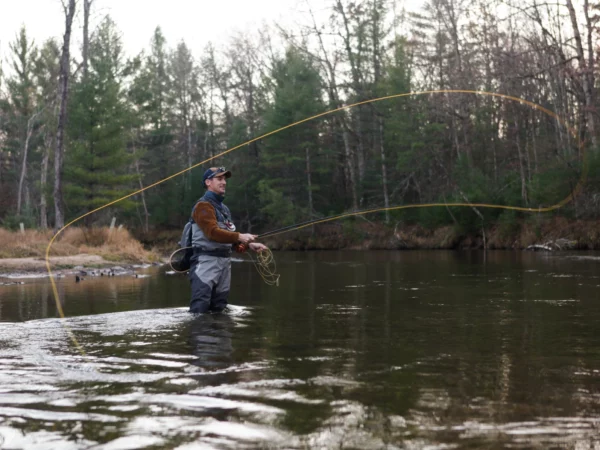
By Lindsay Campbell with photography by Johnny C. Y. Lam, The Narwhal
This story first ran on The Narwhal, a non-profit news organization that publishes in-depth stories about Canada’s natural world.
Those who choose a life in commercial fishing on the Great Lakes are granted a front row seat to the natural world. Familiar joys include the sight of a fiery sunrise cresting the freshwater horizon, and the still water at the tail end of a day, when the coastline is vacant and the world feels like a place of your own.
Less comfortable aspects include winds and waves that roll a stomach, or when the summer sun roasts fishing crews in their steel boats. Kendall Dewey isn’t bothered when the strong stench of fish fills the air, but one reality the Lake Ontario fisherman hasn’t been able to overcome is the shrinking of an industry that has been at the heart of his life for decades.
“It’s sad to think about the future,” says Dewey, who lives in Prince Edward County, Ont., a 20-minute drive from where he fishes along the Bay of Quinte. “I’m hoping there’s enough of a remnant that [the industry] won’t completely disappear.” But Dewey’s children are in their thirties and have chosen to pursue other career paths — the fourth generation fisherman says his family’s legacy in fishing will end with him.
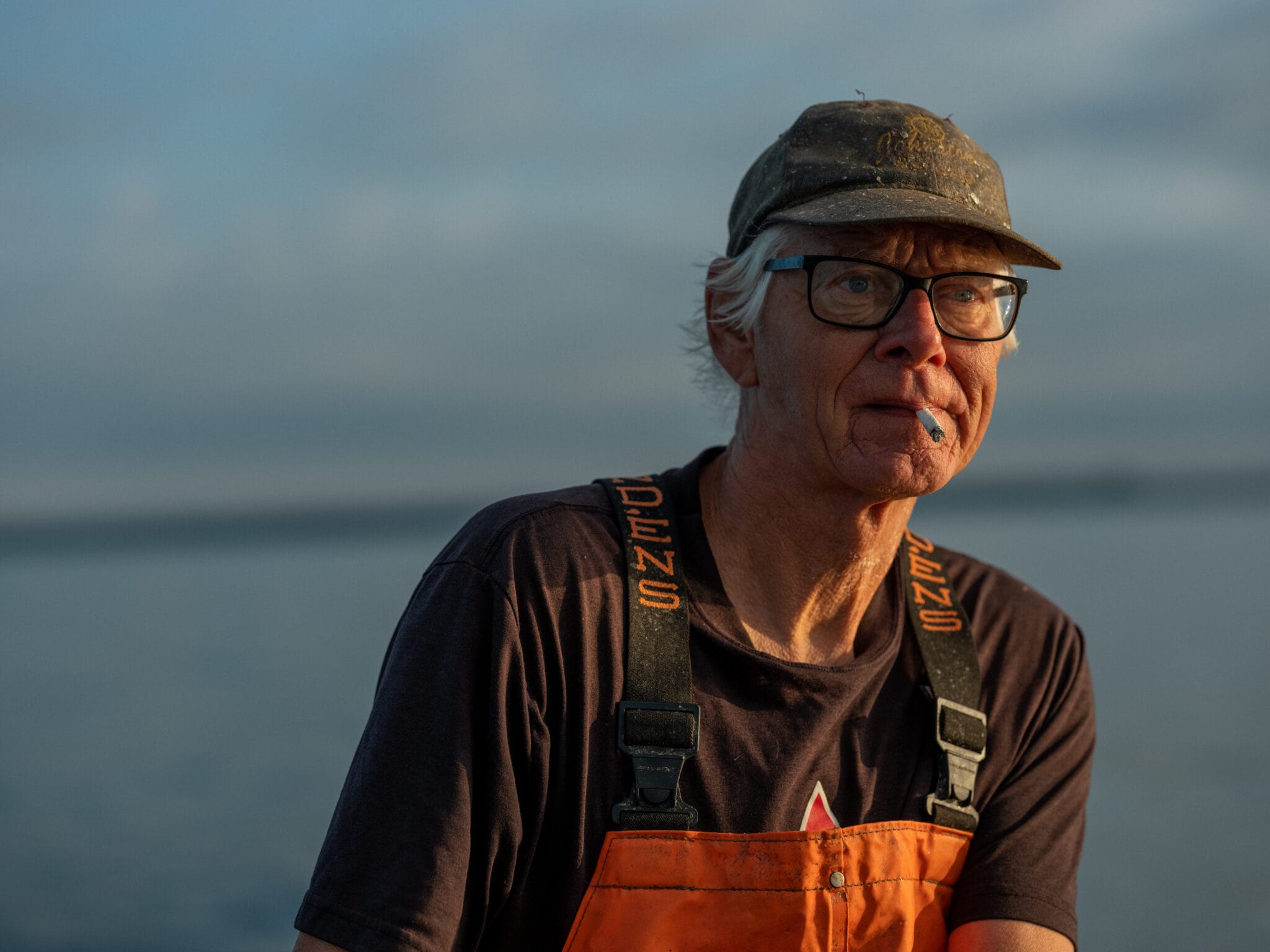
Kendall Dewey has been a commercial fisherman for over four decades, and served on the board of directors for the Ontario Commercial Fisheries’ Association for years. He used to sell his fish to local restaurants. “It was remarkable how many eyes we opened up in this area [from people] who said ‘wow, there’s actually a viable commercial fishery and you’re catching this here and it actually tastes really good’,” he says. “If we didn’t accomplish anything else, I’m happy we were able to do that.” Now, at 69, Dewey feels uneasy about the future of commercial fishing due to the lack of interest from young people and the general public.
Researcher Hannah Harrison says that, contrary to popular assumption, commercial fisheries are not draining biodiversity in Lake Ontario. “There are very few commercial fishermen on Lake Ontario, and it’s a very large lake,” says Harrison, science director of the Coastal Routes Project and a postdoctoral scholar at the University of Guelph.
She studies the human element of Great Lakes commercial fisheries and says Dewey’s experience is not unique. The aging industry is facing many challenges, including that Ontarians are largely detached from the fisheries, which suffer from political pressure from the sport fishing industry to restrain commercial fishermen, and a declining interest in the work.
“Commercial fisheries in the Great Lakes have fished species to extinction in the past — blue pickerel, for example,” Harrison says. But the industry is much smaller now, and modern management tools for assessing fish stock are, in her words, “pretty awesome.”
“The amount of fish that Lake Ontario fishermen are taking out today is very small, particularly when compared with the sport anglers as a whole,” she says, referencing the provincial government’s 2019 Annual Report of the Lake Ontario Management Unit. The paper, which documents the lake’s fisheries and health metrics, indicates the overall status of pickerel (also known as walleye) is “good,” whitefish and rainbow trout populations as “stable,” and brown trout at its highest stock numbers since the 1990s.
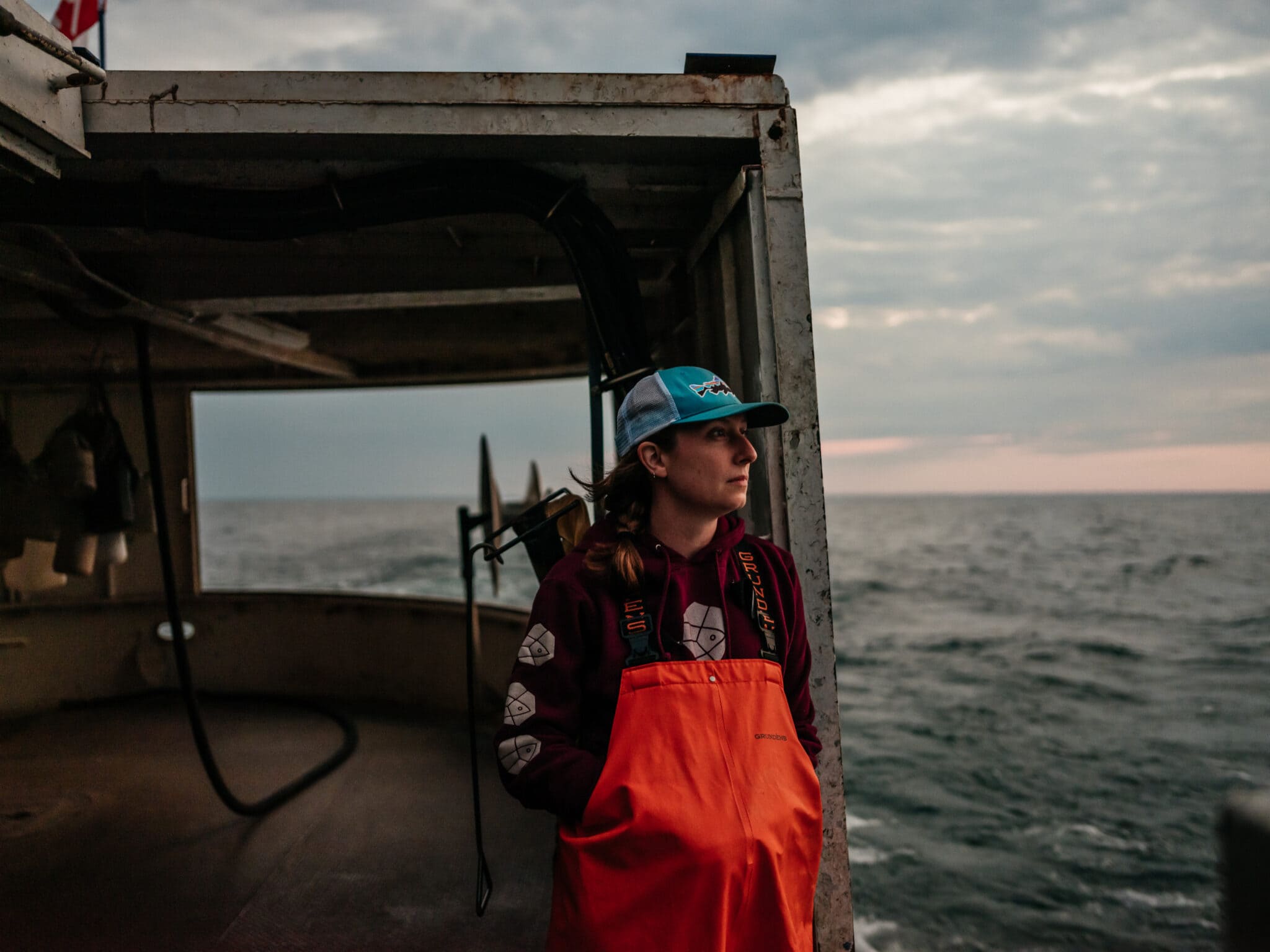
Hannah Harrison, a researcher at the University of Guelph, knows the fishing industry well. She is passionate about the conservation of both fish stocks and fishing communities and one of a small handful of researchers who studies the human elements of Great Lakes commercial fisheries. Her work focuses on identifying the contemporary strengths of these fleets, which include comparatively a transparent supply chain and local consumption, as well as the challenges they face in remaining resilient to change.
Harrison questions why food fisheries on the Great Lakes aren’t provided the same legitimacy as agriculture in Ontario.
“This is good fish … you know where it came from, you can be sure about the labour practices behind that fish, you can be sure the species is actually what’s on the label and it had a relatively small carbon footprint to get to you,” she says. “In this age of the ‘locavore’ … this is that food resource.”
Studies have highlighted the important role local inland fisheries have within a community: a 2016 paper in the journal Environmental Reviews pointed out social, economic and environmental benefits including increased food security and local job creation, as well as lower fossil fuel usage and reliance than the livestock industry. Last February, research in the journal Fish and Fisheries also outlined a need to consider small-scale fisheries when building more resilient agri-food systems.
In Toronto, Kristin Donovan co-owns Hooked, a small chain of sustainable fish shops where she sells a collection of white perch, yellow perch, pickerel, white bass, catfish and white fish from Lake Erie. She says that when fish is sourced locally, it minimizes hiccups or delays that might occur when product is trucked or flown from locations across Canada or around the world.
“Freshness is huge. We get a call in the morning reporting what the boat has and then it’s processed and gets to us the next day,” she says. “We’ve seen weather systems affect what we do hugely and so it’s a comfort knowing your fish is only coming from three and half hours away.”

Tim Martin in a moment of contemplation as he heads back to land after spending a morning out fishing on Lake Erie. A third generation commercial fisherman, he is unsure of the future of Great Lakes fisheries due to increasing regulatory requirements, challenges maintaining port infrastructure and difficulty in finding young people interested in the industry. “It’s not a really good feeling to know that where I fish from used to be the busiest port on north shore Lake Erie. Now it’s the worst … it’s just fallen by the wayside,” he says. “The [federal Department of Fisheries and Oceans] don’t seem to be interested in looking after a small port where you just have me, one commercial fisherman.”
Lake Erie fisherman Tim Martin knows that his business has helped strengthen local food systems. He and his four family members harvest and process their own fish, then sell it at their retail location in Port Burwell, Ont. During the pandemic, when global supply chains buckled and grocery store shelves were wiped clean, the family was able to stay in business. They experienced a heavy rush of local customers, most of whom, Martin says, have become loyal regulars.
“People have told us how grateful they are to have us,” he says. “They still tell us.”
Yet in Port Burwell, where the Martins have operated for more than 30 years, they are the only permanent commercial fishing business that remains. Deteriorating infrastructure on the waterfront and a high cost of entry into the fishery fails to support any aspiring newcomers.
Here are three families still working in the Great Lakes commercial fishing industry in Ontario, trying to provide their communities with a fresh local food source.
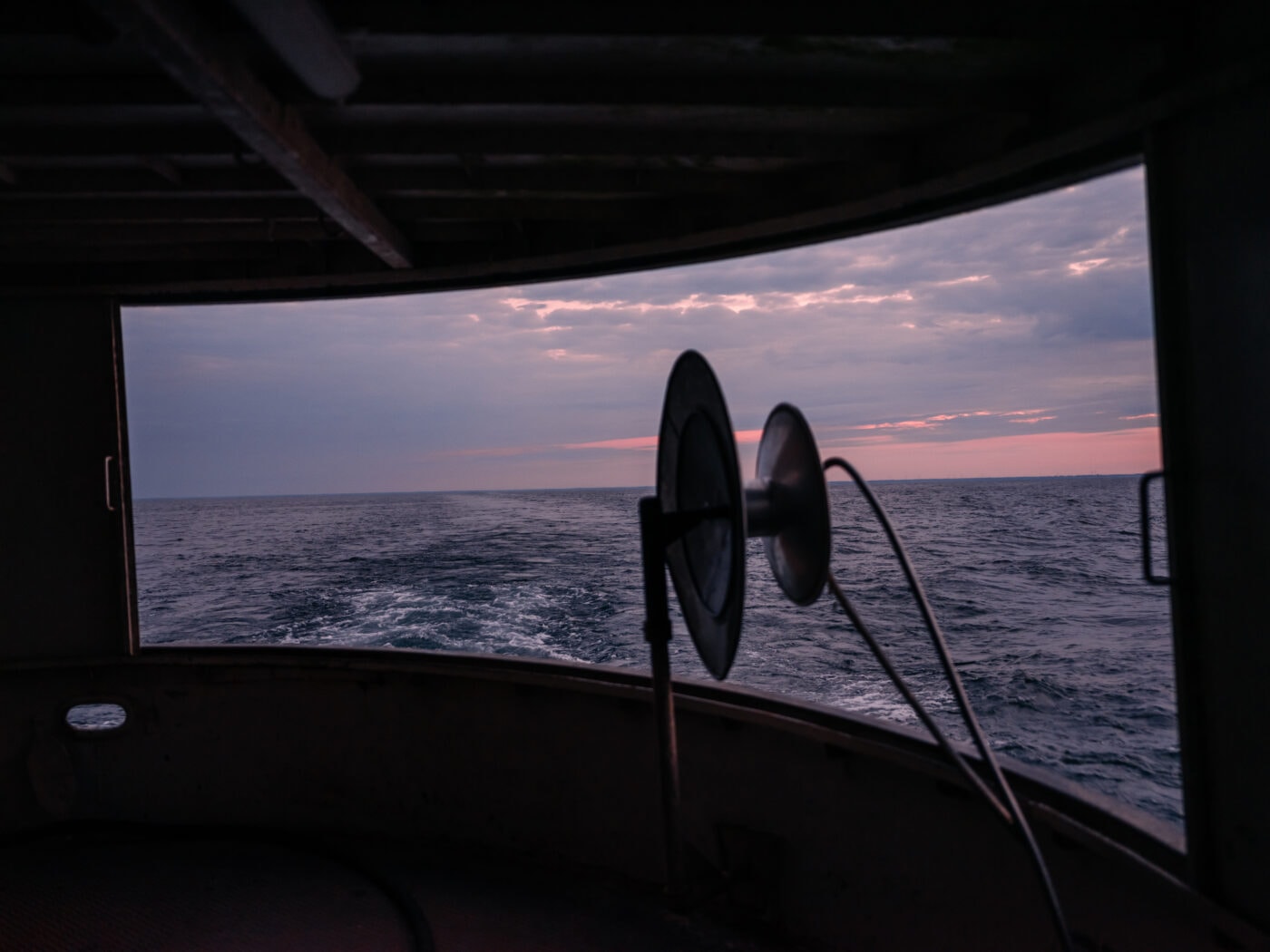
A sunrise over Lake Erie framed by an open hatch at the back of the Amanda May, a commercial fishing boat owned by Tim Martin and named after his daughter.
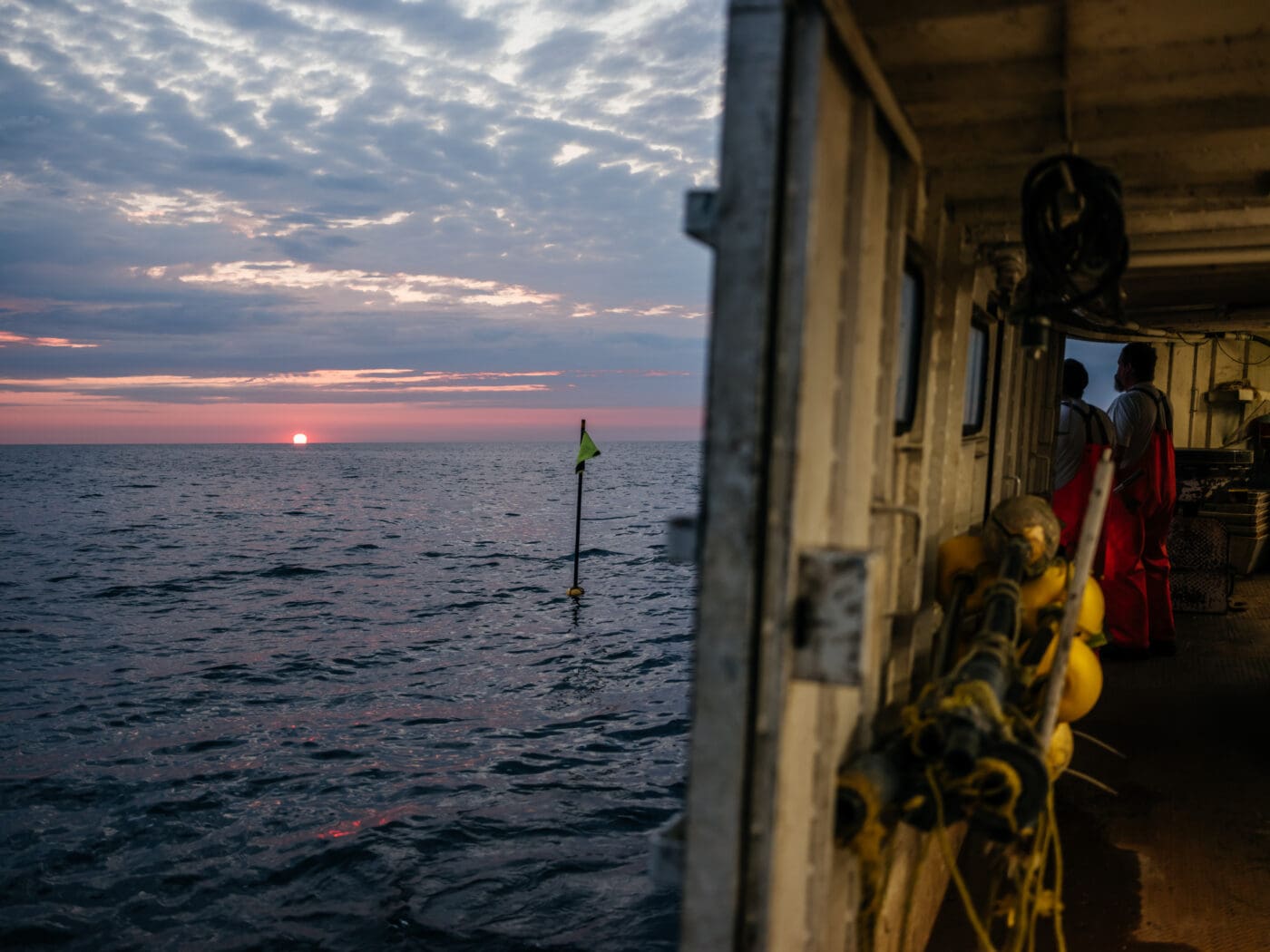
Sun rising over Lake Erie as seen from Tim Martin’s commercial fishing boat. The crew’s nets are marked by a buoy and flag. Nets are typically set the previous day and during warm months must be retrieved early every morning, as fish quality can deteriorate quickly.
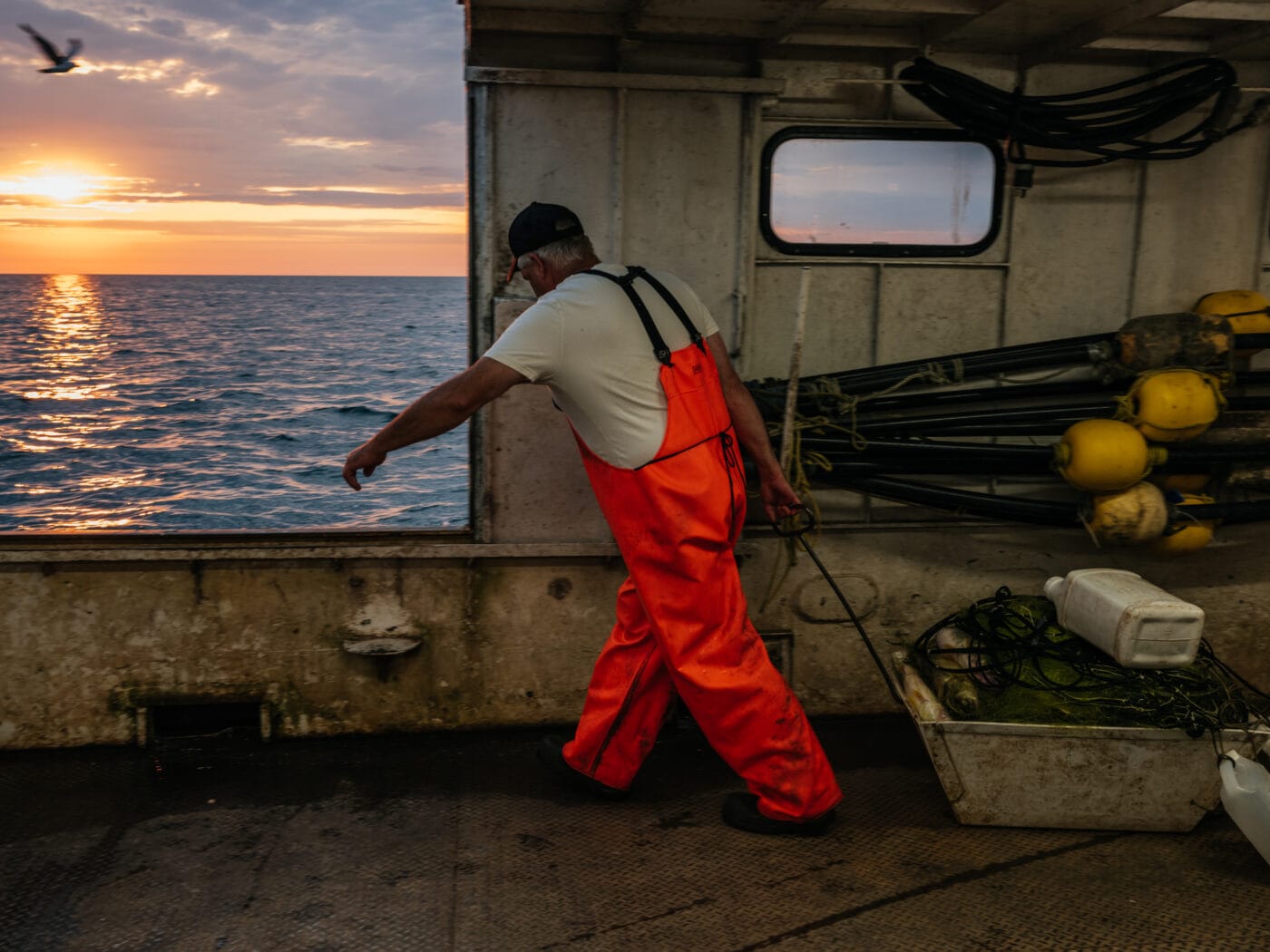
Martin hauls a box full of the morning’s catch.

Brett Martin works through the fishing nets on his family’s fishing boat, the Amanda May. A fifth generation fisherman, he plans to take over one day. “I like the fact that the opportunity to keep the family business going is there, especially with guys getting older and retiring or selling their business,” he says. “I can continue and be part of the next generation of fisherman … it’s hard to beat the open water and fresh air each day.”

Crews work in close proximity in sometimes hectic conditions, like bad weather, poor fishing or broken gear. Here, researcher Hannah Harrison and crew members Brett Martin, Tim Martin and Alan Barber pick fish after a successful day on the lake.
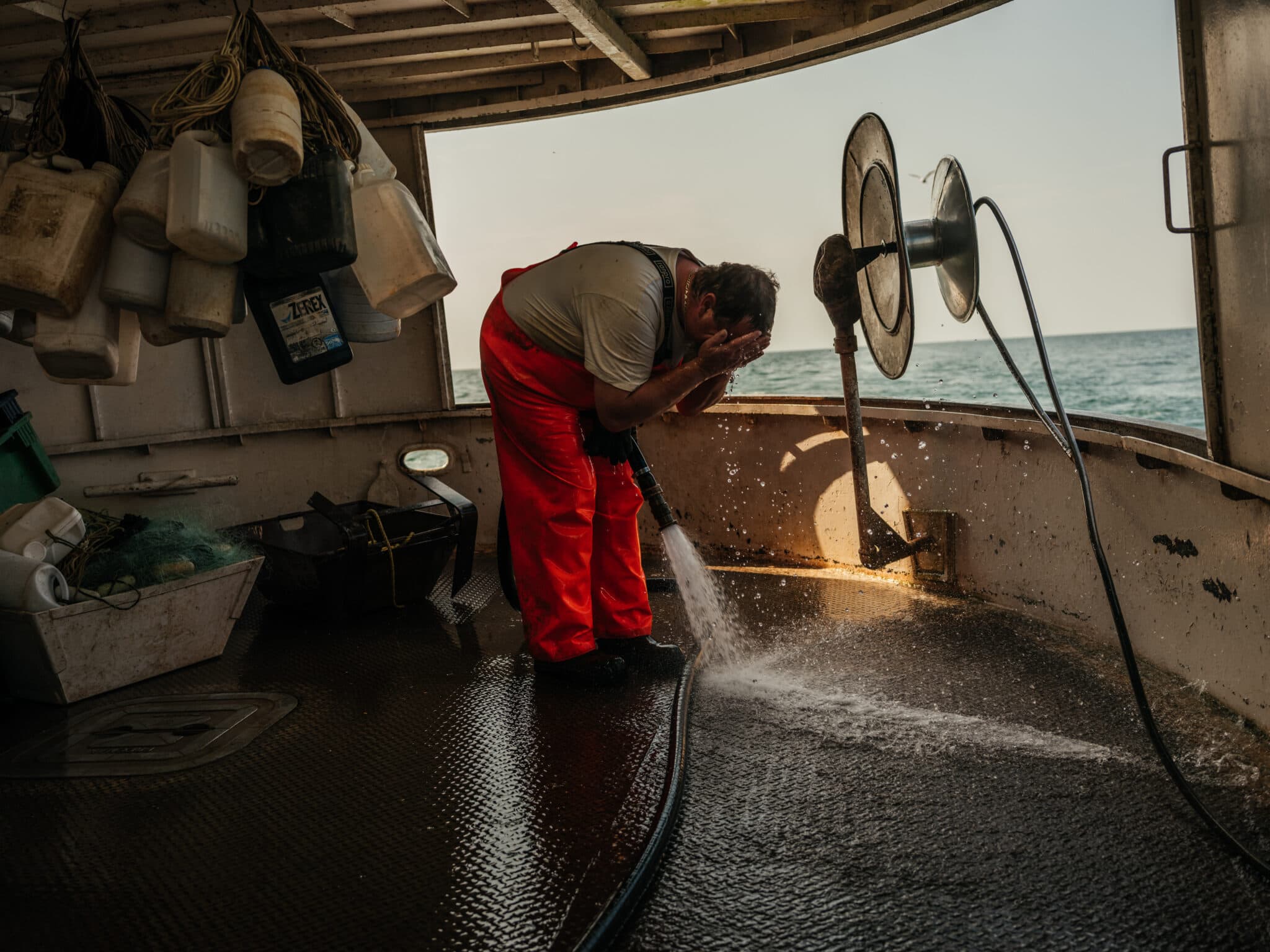
Alan Barber, a commercial fisherman on Lake Erie for over 33 years, washes his face at the end of a work day, which usually starts around 4 a.m. and wraps up with delivering fish to the Martins’ shop around 1 p.m.
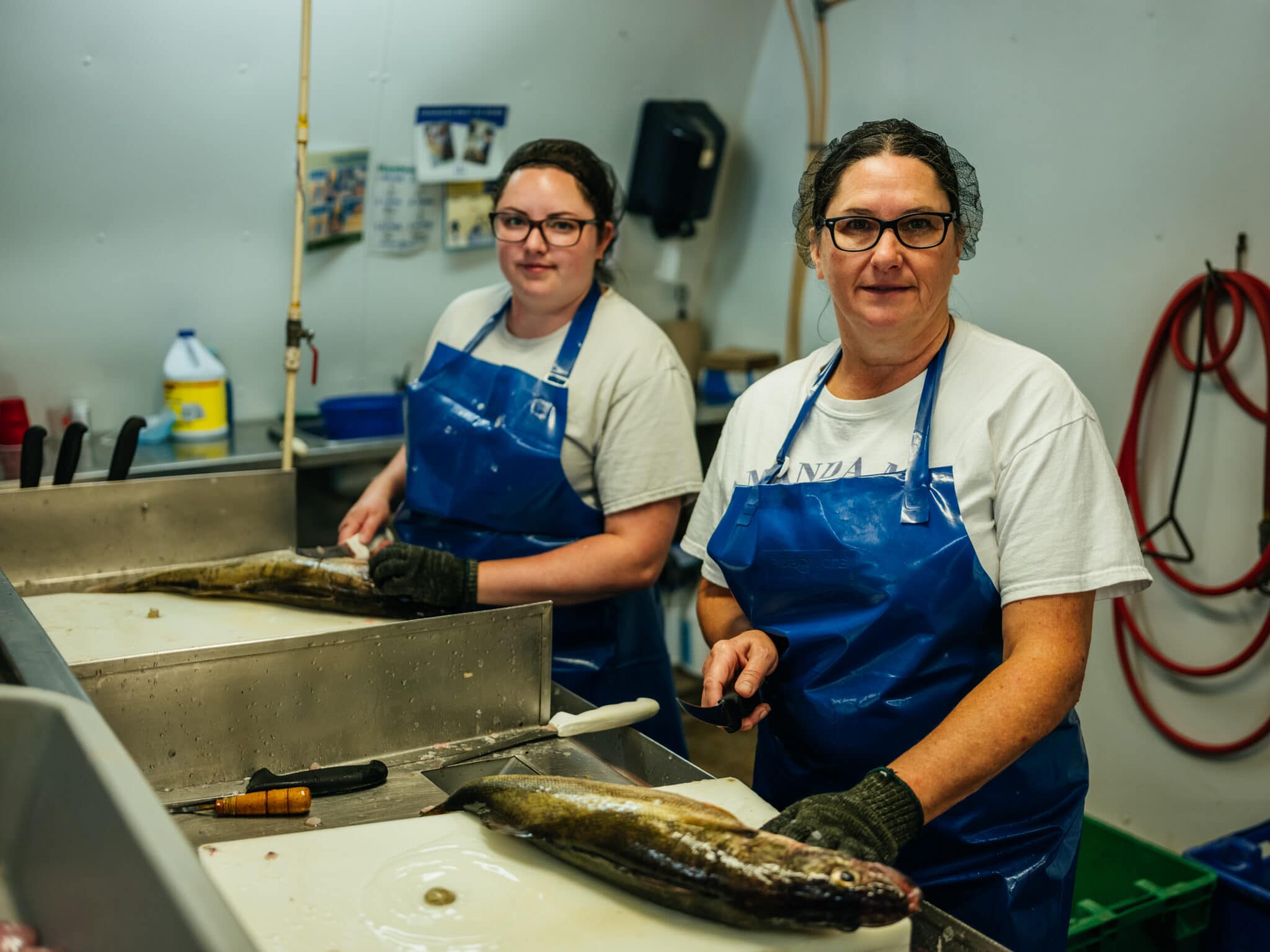
Amanda Martin, left, and her mother, Brenda Martin, clean and fillet fish at the family’s shop in Port Burwell, Ont. While commercial fishing is a male-dominated profession, many women also work in the industry, cutting and selling fish, sewing nets and other behind-the-scenes work that keep things afloat. Small-scale fish processors like the Martins are increasingly an anomaly in globalized systems of food production — at the beginning of the pandemic, when many large processors were forced to temporarily close, they were able to keep their shop open.
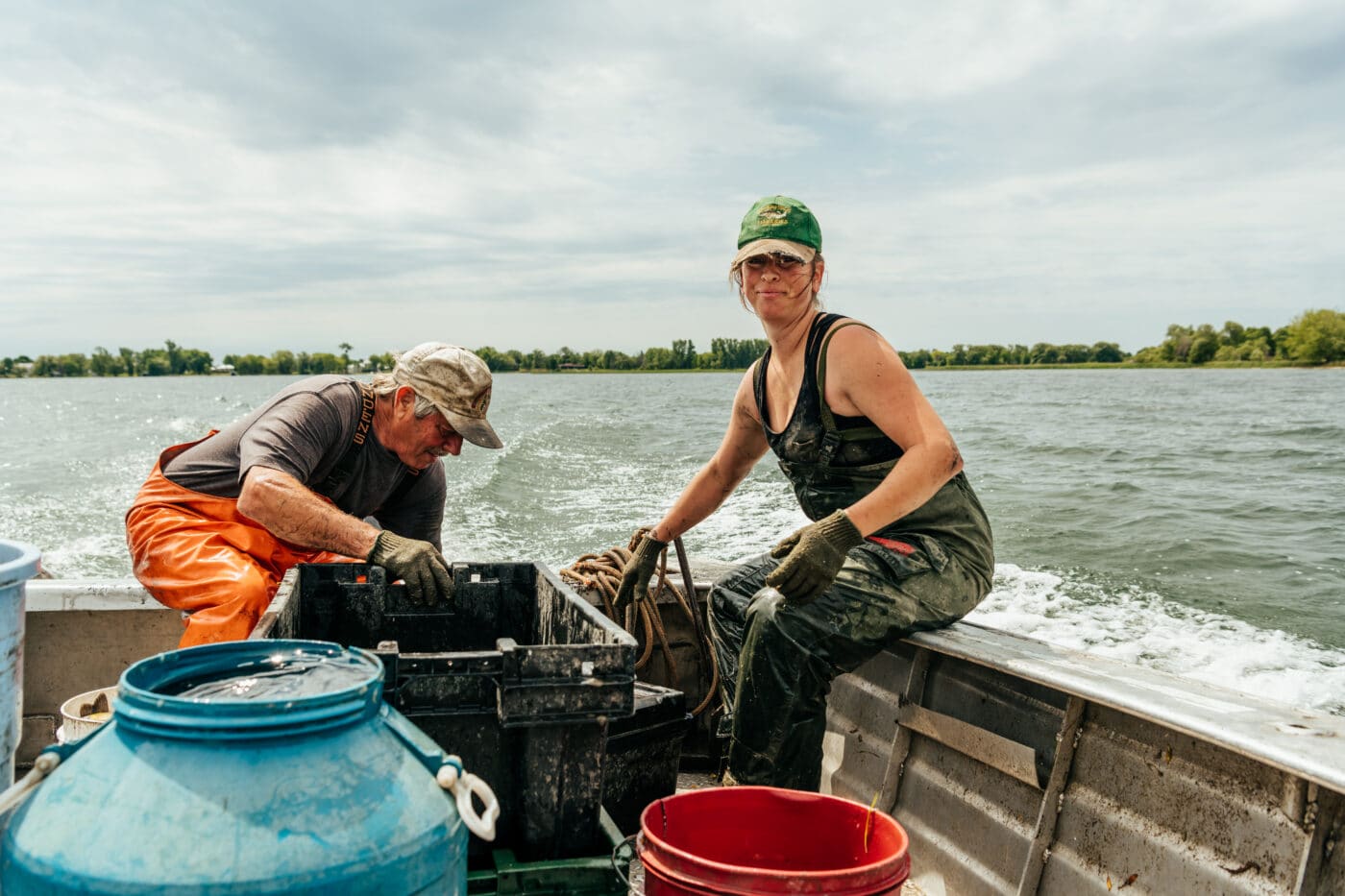
Teal Baverstock has been fishing with her father, Dave Baverstock, since she was a little girl. “Fishermen are becoming fewer and fewer, which is a shame because it is such a sustainable resource,” she says. The work is gruelling and not many young people are interested in Lake Ontario’s shrinking commercial fishing industry, but Teal hopes to take over the family business one day.

The Baverstocks wrangle slippery American eels, an endangered species, into a barrel. Ontario’s Ministry of Natural Resources pays commercial fishermen to capture American eels alive during the spring and fall, then collects them for release downstream on the St. Lawrence River. This allows the eels to bypass dams, locks and other migratory barriers on their way to the Sargasso Sea to spawn.
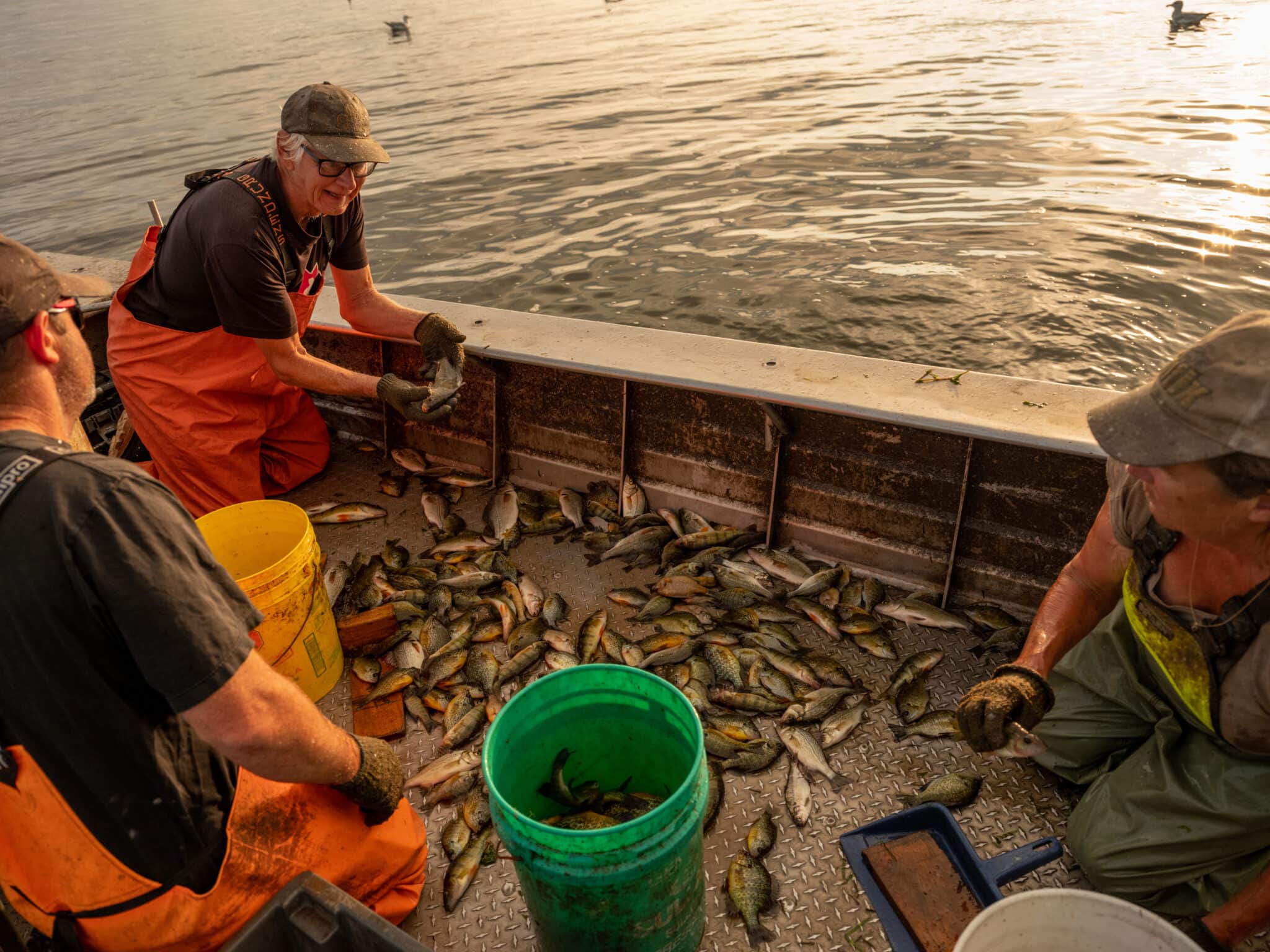
Kendall Dewey, centre, is delighted by his catch as crew man Steve Strutters, left, and Joanne Dewey, right, measure fish by placing them on wooden boards with pre-cut markings. Commercial fishermen may only keep fish within a certain size range, so any fish too small or too big is released alive.
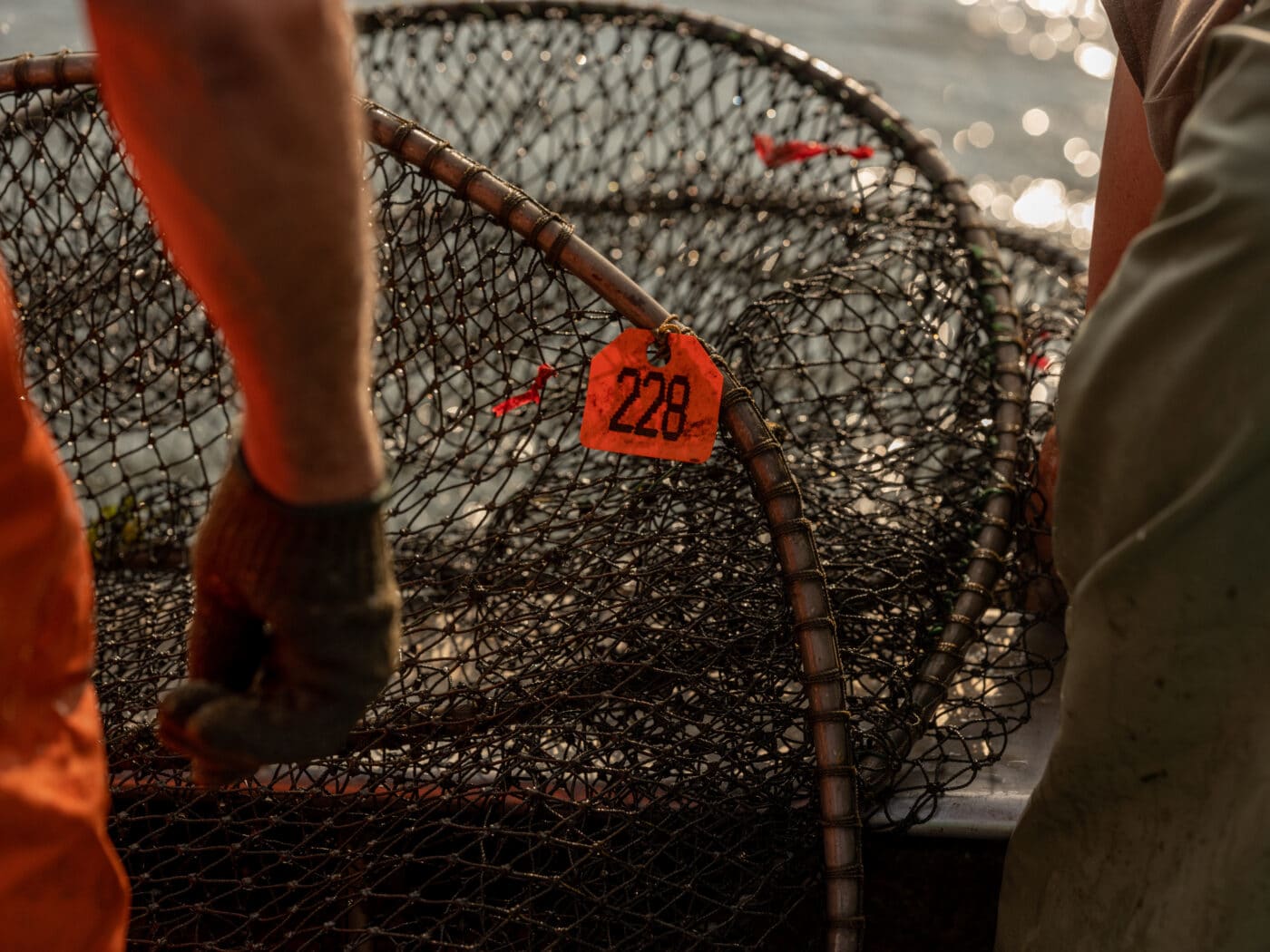
A hoop net, like trap nets, keeps fish alive so they can be retrieved. These low-mortality fishing methods allow for the release of unwanted catch.
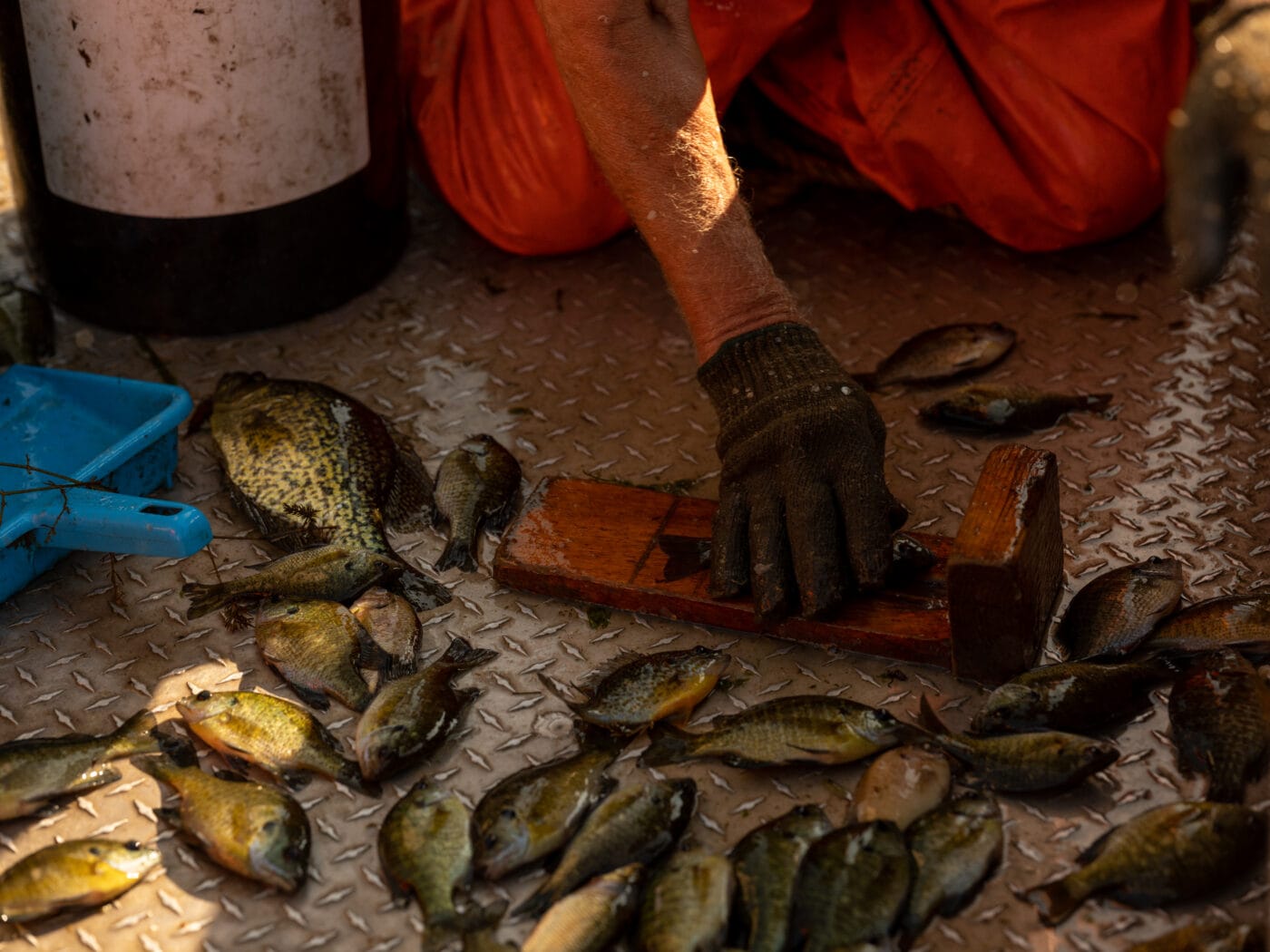
“The smell of fish, it’s never bothered me,” says Kendall. “My favourite fish smell is whitefish. It smells just like cucumbers, fresh cut cucumbers… it goes way back to my childhood, that was my father’s fish of choice too.”
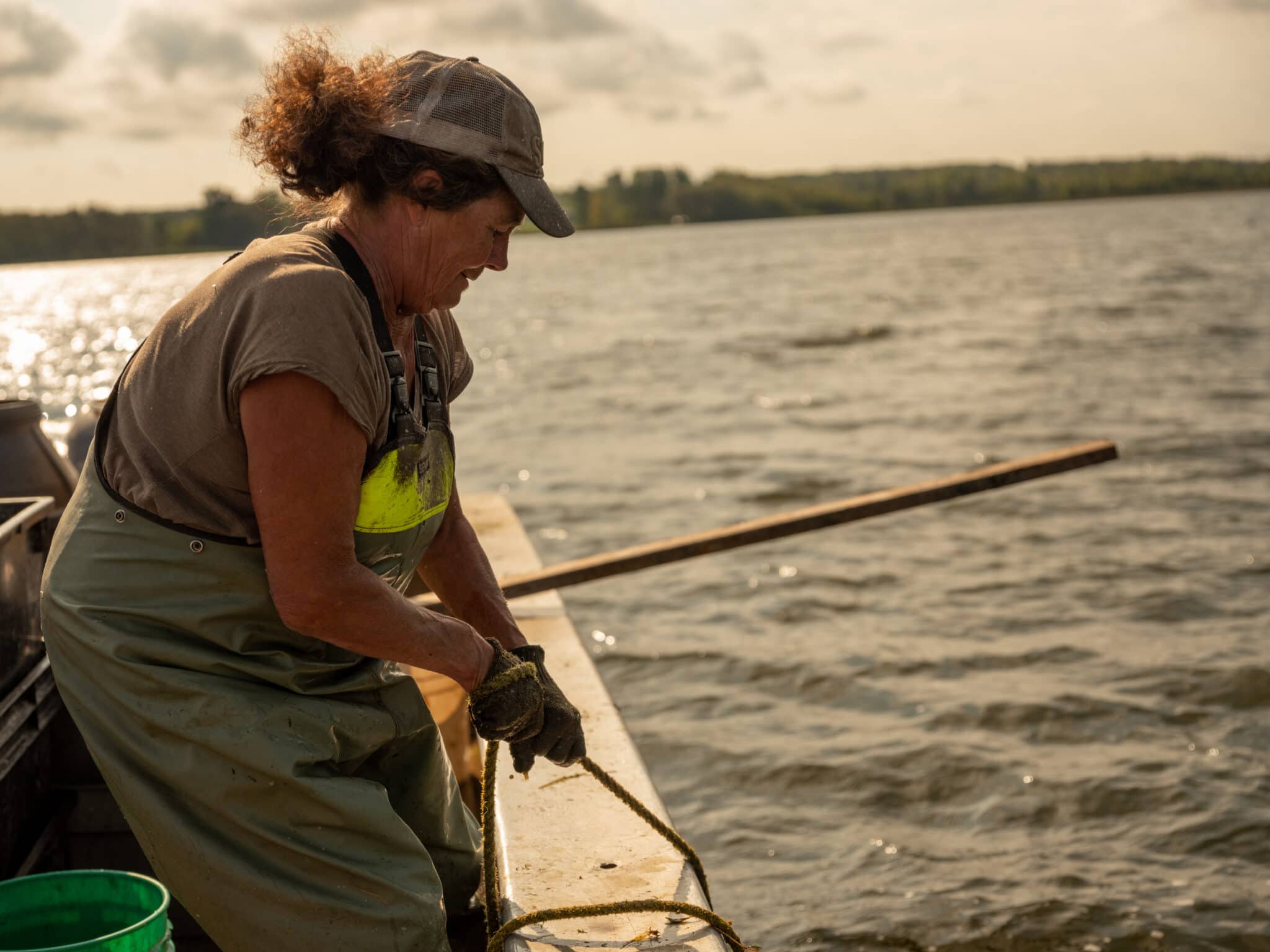
Joanne Dewey, a biologist by training, has fished with her husband, Kendall, for decades.
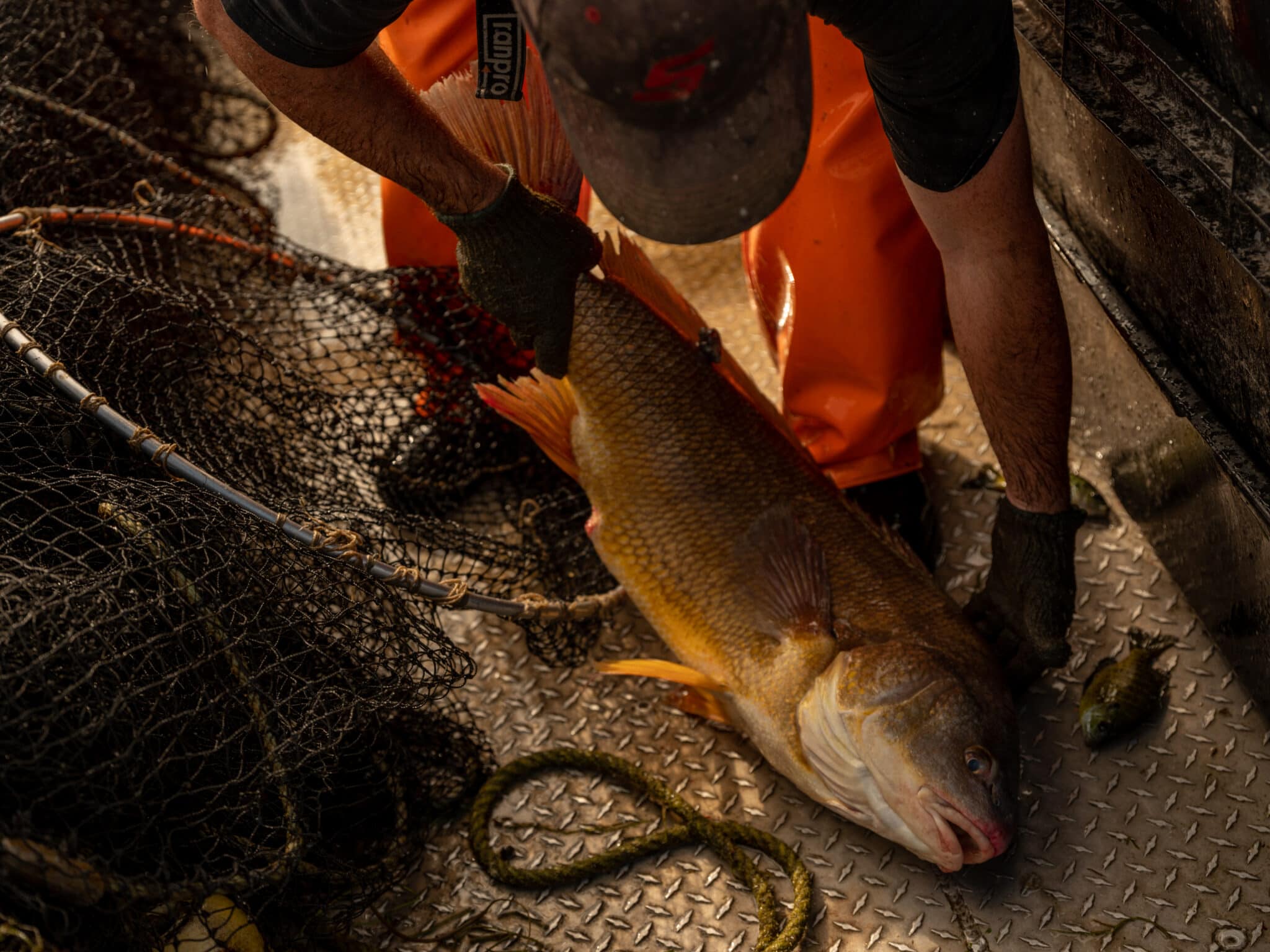
Crewman Steve Strutters lands a sheepshead (also known as freshwater drum). The fish has a relatively tough texture and most sheepshead is released alive, although some is sold to Asian markets in the Greater Toronto Area.
Recent changes to waterfront access in Prince Edward County have been a major barrier to the Dewey’s fishery, which relies on a public boat launch.
Restrictions around hours of access to the launch, as well as the number of people allowed in designated launching locations, have forced the Deweys to operate around the boat launch schedule instead of the best timing for the fishery.
In October, Kendall arrived at a public boat launch only to find the docks had been removed entirely, for maintenance — just one reflection of the disconnect between policy-makers and the needs of commercial fishermen.
Catch more news at Great Lakes Now:
The next source of trouble for Great Lakes fish populations: tires
Adapting to Climate Change Will Only Get More Expensive
Featured image: A sheepshead (also known as freshwater drum) is released by crewman Steve Strutters after being caught in a trap net. Maintaining biodiversity and releasing unwanted fish alive is a high priority for Lake Ontario commercial fishermen. Trap nets and hoop nets capture fish and keep them alive until fishermen can retrieve them, making them a low-mortality way of fishing.
1 Comment
-
Good luck, fishers. Enjoyed reading about your lives. I live on Lake Erie near the Chagrin River.



